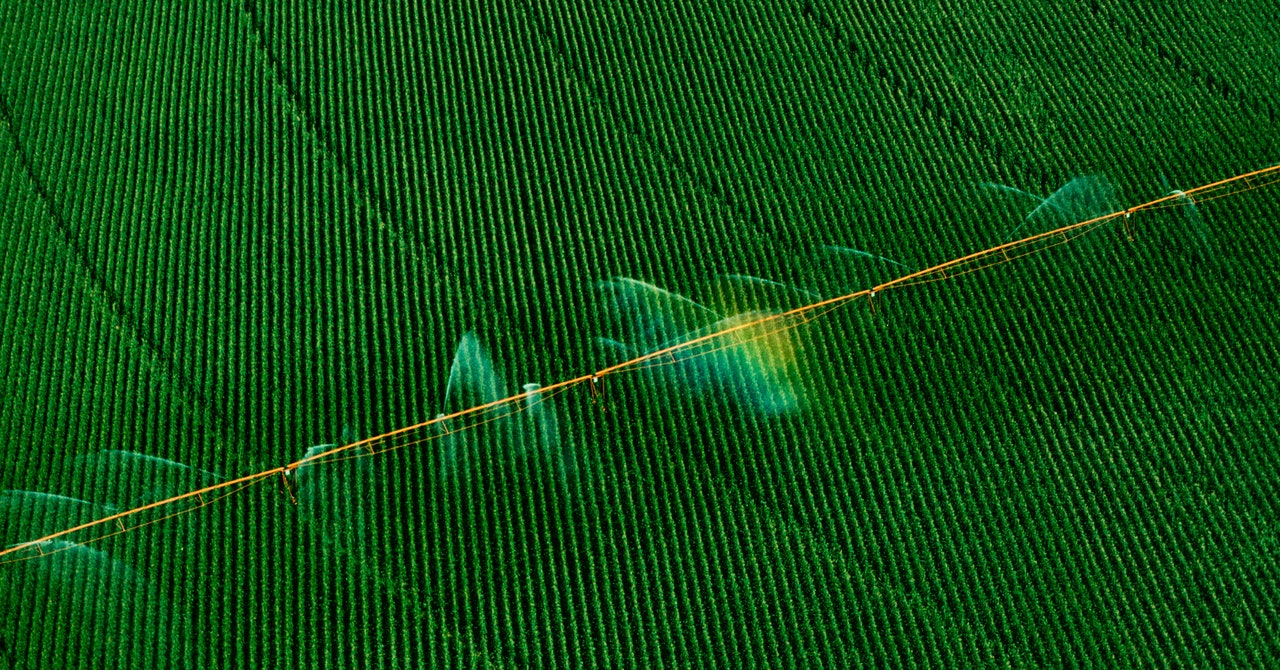
You can see the warming hole in the top map above, which shows maximum temperatures between May and August in the years 2001 to 2020, compared to the years 1957 to 2000. White areas show where there has been no change. Illinois, Missouri, and Arkansas are solid white. There are even some splotches of blue in parts of the Dakotas, Minnesota, and Iowa, where temperatures have actually fallen. Meanwhile, red signifies higher temperatures—and that covers basically the entirety of the American West.
Scientists have several theories for why this warming hole has persisted. Maybe aerosols in the region’s atmosphere reflect some of the sun’s energy back into space. Perhaps agricultural land, and its accompanying irrigation, water-cool the area. The landscape “sweats,” much like your body would.
In a new paper, Hoerling and his colleagues argue for something similar: Summertime precipitation across the central US has dramatically increased over the past two decades compared to the years 1957 to 2000, and that has boosted the amount of water on the landscape, acting as an evaporative cooler. In the bottom map of the trio above, the green spattered across the central US indicates up to a 30 percent rise in precipitation between the two time frames.
“There still potentially could be effects from agriculture, but we found this warming hole to be bigger than the agricultural change,” says climate scientist Zachary Labe of Princeton University and NOAA, and coauthor of the new paper. “We think it’s more likely linked to some sort of atmospheric condition.”
It’s critical to remember that even though global temperatures have already increased 1.1 degrees Celsius above preindustrial levels, that’s an average. Some places are heating much faster than others. (The Arctic is warming up to four times faster than the rest of the planet.) All of that is happening on top of natural variability in Earth’s climate system. Some years are just warmer or cooler, or wetter or drier, than others. “I think it’s really important for people to understand that it’s not like every day is getting hotter,” says MIT atmospheric scientist Arlene Fiore, who wasn’t involved in the paper.
Labe and Hoerling’s new research finds that such natural variability, plus some climate change, could be behind the persistence of the warming hole. There’s been a tendency toward more low-pressure systems over the central US. “Low pressure is associated with stormy air conditions, so more rainfall, more cloud cover,” says Labe. “You can think of that as dampening the amount of warming that can be possible during a hot afternoon.”
For one thing, clouds shade an area and deflect some of the sun’s energy. Rain is also a kind of protective buffer for the landscape: When the sun comes out after a storm, it first evaporates the new precipitation, rather than immediately heating up the soil.
Interestingly enough, the conditions that contribute to the hole actually begin thousands of miles to the west, in the tropical Pacific. “Changing ocean surface temperatures, partly caused by global warming and partly caused by naturally occurring variability, are producing the downstream changes in atmospheric circulation over the US,” says Gerald Meehl, a senior scientist at the National Center for Atmospheric Research, who wasn’t involved in the new research. “This paper confirms earlier work that these changes in circulation are bringing this cooler and wetter weather into parts of the eastern US.”
Don’t expect the warming hole to last much longer, though. Summer heat waves will eventually get more frequent and intense in the central US, though at a pace somewhat slower than in other parts of the country, according to modeling done by the team. “We looked into the future and found [that] essentially by 2040, 2050 … the probability of Dust Bowl–like extreme temperatures will become very much more probable,” says Labe.
“That’s part of the warning of this paper,” adds Hoerling, “That this coolness is probably still rather transitory.”
The warming hole is weird, but not unexplainable. And it may be the exception to rising temperatures that proves the rule.

